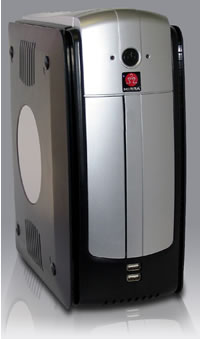 By 2009, consumers will require at least a 57Mbit/s Internet connection speed – up from today’s 3Mbit/s – to meet the demands of an ever-growing collection of always-on home media devices, according to research carried out by Jupiter Research. For tech-savvy consumers, the bandwidth requirement will likely be even higher, as much as 84Mbit/s.
By 2009, consumers will require at least a 57Mbit/s Internet connection speed – up from today’s 3Mbit/s – to meet the demands of an ever-growing collection of always-on home media devices, according to research carried out by Jupiter Research. For tech-savvy consumers, the bandwidth requirement will likely be even higher, as much as 84Mbit/s.
Fuelled by the uptake of home wireless networks, the report, “A Portrait of the Wireless Home in 2009,” tackles a number of key issues; what the average and tech-savvy digital home will look like in 2009; comparing wireless bandwidth requirement of the average home today with 2009. It also poses questions such as with the implementation of compression standards such as H.264, will consumers need 100Mbit/s or 802.11n at home?
The report comes following the four complete and 30 partial proposals that were submitted to the IEEE for consideration for the 802.11n standard in August 2004, which will increase wireless throughput to 100Mbit/s. The 802.11n standard should be ratified in 2006, although pre-standard products are already out on the market.
The study finds a growing reliance on digital media. Home media servers, such as Mirra’s Personal Server (from $399), are growing in popularity because they allow you to access files stored on their hard disk from any Web browser, allowing you to playback video and audio files to a laptop or Wi-Fi enabled TV in your living room, or access family photos at your desk at work.
With the increasing uptake of both on-demand video and audio playback, it’s looking more likely that consumers will access media files stored on a central server in their backroom from multiple-connected devices – especially as the number of consumer electronics devices using a wireless network in the home will explode over the next five years, as people move away from traditionally separate devices, such as PCs and stereos.
802.11g has a theoretical maximum speed of 54Mbit/s, you only tend to get on average about half of that. Although this is still over twice as fast as 802.11b, the original WiFi, home media networks which transmit TV shows and music as well as Internet connectivity to multiple devices will require far more speed and bandwidth than standard Wi-Fi can provide. Standards like 802.11n and Ultra Wide Band (UWB) move closer in the right direction.